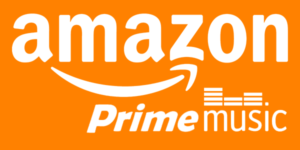- in Commentary by Bobby Owsinski
Get Ready For The Amazon Streaming Music Disruption
 With the battle over streaming music leadership raging on between Spotify, Apple Music and YouTube, there’s one major company that’s been lying silently in the weeds waiting for the right time to pounce on an industry increasingly ripe for the picking. Don’t look now, but it may be Amazon that may soon be the one causing the disruption in the music business, and not the other popular contenders.
With the battle over streaming music leadership raging on between Spotify, Apple Music and YouTube, there’s one major company that’s been lying silently in the weeds waiting for the right time to pounce on an industry increasingly ripe for the picking. Don’t look now, but it may be Amazon that may soon be the one causing the disruption in the music business, and not the other popular contenders.
Amazon’s already a major, but low-profile, mover and shaker in the industry, with reportedly somewhere between 75 million and 90 million yearly subscribers (the company doesn’t release such information, so this is just informed speculation) to its Prime service, and although most of that centers around 2 day merchandise shipping and video delivery, the different types of offerings coming from the Prime Music portion of its service have been growing by the month.
This slow roll-out is happening at a controlled pace, but you get the feeling that the company is learning what works best with each move while not intentionally making a lot of waves as it positions itself to enter the online streaming market full-force.
One recent example of this is when Amazon Music was added to T-Mobile’s Music Freedom data-free music streaming program, which is the first instance of Prime Music being available to off-the-platform users. The move didn’t cause a lot of headlines, but gives the company some experience in rolling out a service beyond its own closed ecosystem.
Step By Step
What might be more an indicator of the ultimate bigger picture is the fact that Amazon recently made it’s Prime Video service available as a stand-alone product for $9 a month. Just adding the ability to purchase the service on a monthly basis is a break from the traditional yearly membership required in the past. Another foreshadowing of the future perhaps?
Then Amazon Launched what amounted to a YouTube Rival with its Amazon Video Direct (AVD), which although it launched with only publishing heavyweights and no record labels, provides an interesting outline of how it will pay content partners, as well as how it will take down videos if copyright infringement occurs. AVD gives partners the option to upload their content to Amazon Prime Video (available to tens of millions of premium tier subscribers), make it available as an add-on subscription through its Streaming Partners Program, offer it as a one-time rental or a one-time purchase, or make it available to all Amazon customers, which is ad-supported like YouTube.
According to Variety, the Prime Video option pays video owners a 15 cents per-hour royalty fee in the US and 6 cents per-hour in other territories, but that appears to cap at $75,000 per year. On top of that, Amazon will also pay partners a 50% royalty of the retail price from one-off purchases and rentals. As with YouTube, Amazon will pay the partner 55% from any ad revenue received. Amazon will also distribute $1 million a month to the makers of the 100 most popular programs viewed by Prime members each month. Regardless of the percentages, providing a roadmap for how content contributors get paid sure looks like Amazon is setting up for something bigger down the road. [Read more on Forbes…]

